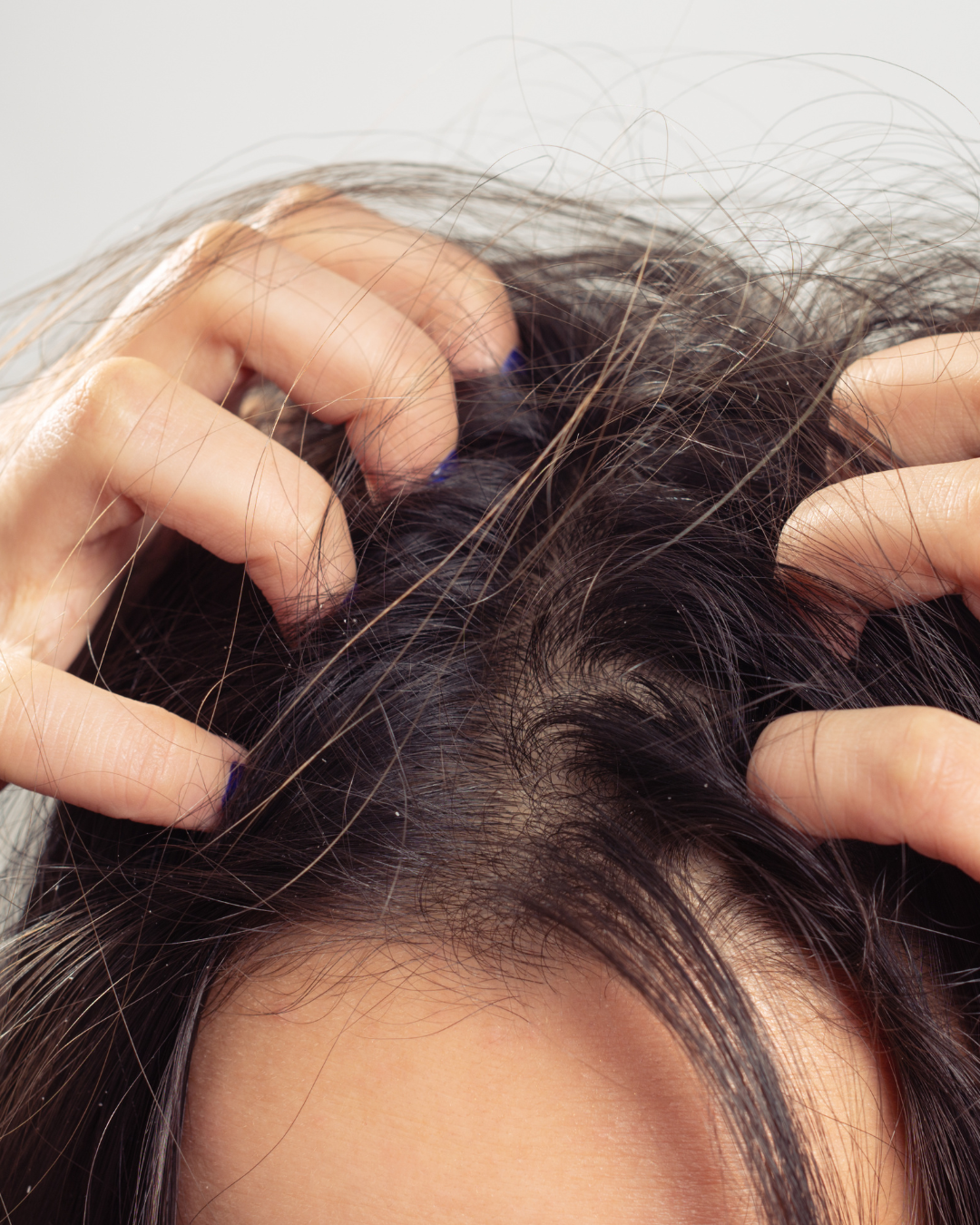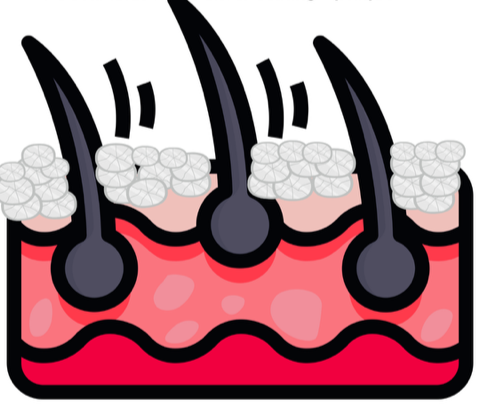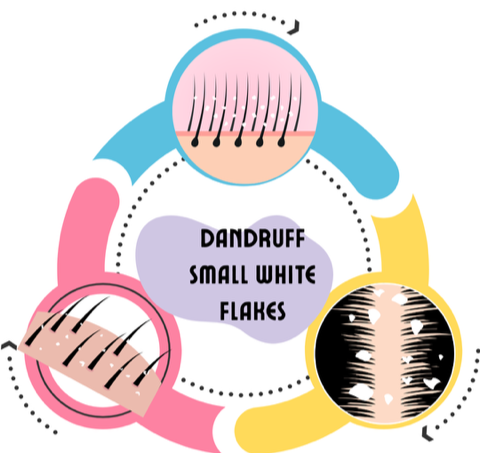Why Your Scalp Itches This Time of Year—And What to Do About It
As the seasons shift and the air cools, many of us notice changes in our scalp. For some, it’s mild and annoying; for others, it becomes a persistent, uncomfortable problem. As a trichologist, I often see how seasonal changes, weather, and underlying scalp conditions intersect to trigger flare-ups.
From a trichologist’s perspective, this isn’t just about dryness or dandruff. It’s a complex reaction involving the scalp’s barrier function, oil production, microbiome balance, and inflammation. Seasonal transitions create the perfect storm for flare-ups, especially in autumn and winter.
Let’s unpack why scalp conditions worsen during colder months, and then break down the key differences between dry scalp, seborrheic dermatitis, psoriasis, and dandruff, including what causes each one and how to find real relief.
Why Scalp Conditions Flare in Autumn and Winter
Seasonal scalp irritation is biological and environmental changes working against you. This includes:
Cold air & low humidity: Winter air holds less moisture, and indoor heating further dehydrates the scalp, compromising the skin barrier and leading to tightness, dryness, and flaking.
Hot showers & harsh cleansers: Many people take longer, hotter showers this time of year, which strip the scalp’s natural sebum and disturb its microbiome.
Microbial imbalance: Fungal organisms thrive when oil balance shifts, making conditions such as dandruff and seborrheic dermatitis flare.
Friction & buildup: Hats, scarves, and protective styles can trap sweat and product residue, irritating the scalp or increasing inflammation.
Immune & stress factors: Less sunlight, disrupted routines, and colder temperatures can increase immune stress, worsening autoimmune conditions like psoriasis.
Together, these elements make autumn and winter the most common seasons for scalp discomfort, especially if you already have a sensitive or reactive scalp.
What is Dry, Itchy Scalp?
Dry scalp is often mistaken for dandruff, but it’s actually a loss of moisture and oil balance in the scalp’s outer layer. When the scalp barrier weakens, it can’t hold hydration, leading to itching, tightness, and light flaking.
What It Feels Like
Tight, sometimes itchy scalp, especially after washing.
Fine, powdery flakes that are small and white.
No greasy or red patches, just dryness and irritation.
What Causes Dry, Itchy Scalp
Low humidity and indoor heating.
Hot water during shampooing.
Harsh or overly clarifying shampoos.
Nutrient or hydration deficiencies.
What Helps Dry, Itchy Scalp
Switch to lukewarm water and gentle, sulfate-free shampoos.
Incorporate an antioxidant scalp mask once a week.
Use a humidifier to restore indoor moisture.
Add essential fatty acids and hydration to your diet.
A dry scalp responds quickly when moisture is restored, so the key is consistency, not just quick fixes.
What is Seborrheic Dermatitis?
Seborrheic dermatitis is a chronic inflammatory scalp condition marked by red, greasy, or scaly patches that can extend beyond the hairline. It’s caused by an overgrowth of the yeast Malassezia combined with excess oil and sensitivity in the skin barrier.
What Seborrheic Dermatitis Feels Like
Persistent itching, often worse in cold or stressful periods.
Greasy yellow or white flakes that cling to the scalp or hair.
Redness or tenderness around the affected areas.
What Causes Seborrheic Dermatitis
Overactive sebaceous (oil) glands.
Microbial imbalance (yeast overgrowth).
Stress or immune fluctuations.
Flare-ups are very common in cold months.
What Helps Seborrheic Dermatitis
Use antifungal shampoos. The Juniper therapy shampoo is my top seller and is sold exclusively at my center.
Apply calming scalp treatments, like my juniper scalp cream, between washes to reduce inflammation.
Manage stress and maintain a consistent cleansing routine.
Avoid applying scalp & hair oils completely because balance is key.
When managed properly, it can go into remission and stay controlled long-term.
What is Psoriasis?
Scalp psoriasis is an autoimmune condition that causes the skin to regenerate too quickly, leading to thick, raised plaques covered in silvery-white scales. It’s not contagious, but it is chronic and can be deeply uncomfortable.
What Psoriasis Feels Like
Intense itching or burning sensations.
Thick, defined patches that may bleed if scratched.
Dry, silvery scales that often extend past the hairline or behind the ears.
What Causes Psoriasis
Immune system overactivity.
Genetics and environmental triggers (cold weather, stress, illness).
Inflammation and oxidative stress within the scalp tissue.
What Helps Psoriasis
Medicated shampoos or topical treatments containing salicylic acid, juniper berry, or corticosteroids (under professional supervision). Used 3-4 times a week or daily.
Consistent, gentle cleansing. Avoid scratching or aggressive exfoliation.
Moisturize the scalp regularly with emollient treatments.
Seek a trichologist for prescription-grade solutions.
Psoriasis requires patience. It often cycles through remission and flare-ups, and each individual’s triggers differ.
What is Dandruff?
Dandruff is the most common scalp condition, often considered a milder form of seborrheic dermatitis. It presents as visible flakes without significant redness or inflammation.
What Dandruff Feels Like
Mild to moderate itchiness.
Fine, white flakes that fall easily onto clothing.
No thick plaques or raised patches, just persistent shedding.
What Causes Dandruff
Overgrowth of Malassezia yeast.
Scalp oil imbalance (too dry or too oily).
Cold weather and low humidity.
Poor cleansing habits or product buildup.
What Helps Dandruff
Massage gently to lift flakes without irritating the scalp.
Follow up with a lightweight moisturizing treatment.
Use Juniper shampoo and antioxidant scalp treatments sold exclusively at Penny James Trichology Center.
Shampoo hair and scalp at least three times a week.
When properly managed, dandruff can be completely controlled, but maintenance is key, especially during seasonal changes.
A Trichological Perspective on How to Soothe Your Scalp
Scalp care goes far beyond the surface. It’s a reflection of your body’s internal balance, your environment, and your stress levels. When the seasons change, the scalp’s ecosystem changes too. By understanding the science behind what’s happening—and responding with targeted, compassionate care—you can restore harmony and comfort from the root up.
Your scalp deserves as much attention and nourishment as your skin because a healthy scalp truly is the foundation of healthy hair.
Here are some trichologist-approved strategies for a comfortable, healthy scalp all season long:
Balance your cleansing routine
Use lukewarm water and Trichology-recommended shampoo suited to your scalp type.
Alternate medicated and moisturizing formulas if you’re treating a chronic condition.
Replenish moisture
Introduce weekly scalp masks, Penny James Juniper Scalp Cream or Antioxidant cream.
Keep indoor air humidified to support skin barrier function.
Protect the scalp environment
Wash hats, scarves, and pillowcases regularly to reduce buildup and microbes.
Dry hair after washing it, and try not to excessively scratch.
Support scalp health internally
Stay hydrated and maintain a balanced diet rich in zinc, biotin, and omega-3s.
Manage stress, which can trigger inflammatory responses.
Seek professional care when symptoms persist
If flakes, itching, or redness persist for more than a few weeks, consult a trichologist for a tailored scalp analysis and treatment plan.
As a trichologist, my goal is to go beyond symptom management and uncover what’s really happening beneath the surface. During a scalp analysis, I use a dermatoscope to examine the scalp and hair follicles up close, looking for signs of inflammation, buildup, or imbalance. I also assess lifestyle, environment, diet, and stress levels because scalp health is never just about what’s happening on top.
Clients are encouraged to bring recent bloodwork as well, so we can identify nutritional or hormonal factors that may be contributing to dryness, itching, or shedding. This whole-body approach allows us to create a customized plan that not only relieves symptoms but also promotes lasting scalp and hair health from the inside out.
Let me be your guide along your scalp journey for healthier, more resilient hair.
Copyright 2025 © Penny James Trichology Center







